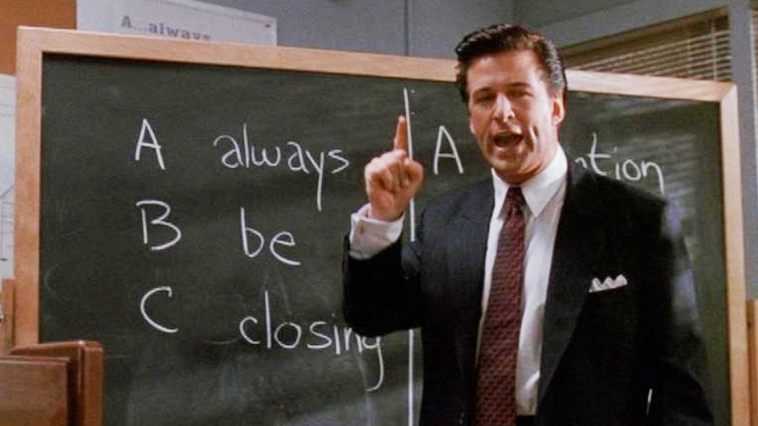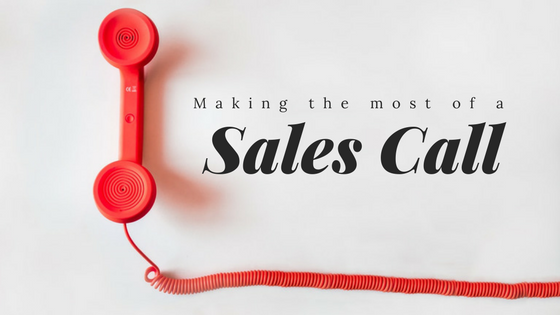Here’s what I have always loved about sales, it’s a lot like SPORTS. There is a science to it and if you approach it similarly you can drive salespeople to break all kinds of records just like athletes do. It’s really interesting because just like athletes have a certain DNA makeup, sales people do too. What we are talking about here though is creating a great sales call after you have discovered those talented people, and how you can coach, train, and drive peak performance by leveraging a methodology that allows for maximum potential. At my company Leading Edge Connections LLC we pride ourselves on exemplary salespeople, and that’s why we created and drive this methodology with our teams. I was in a good mood so I felt like sharing that with others for their companies, or maybe you’ll say forget about it and just hire us!
So, because selling is two-way street it’s important to create and utilize a method that keeps it really simple and focuses on two people, the salesperson and the consumer. There is a ton of psychology and other components that go into all this, but for the sake of your sanity, and in hopes you will continue to read this I will abstain from listing all of it. You’re welcome! I’ve gathered my takeaways and tactics for running successful sales calls/sales centers, based on my 25+ years of sales experience. As things continue to migrate further into this customer-centric paradigm, you’ll find that most of the tactics I have included are focused on the consumer. The old-school ‘Wham! Bam! Thank you ma’am!’ days are over.
15 Killer Sales Tips from the
Leading Edge Connections Sales Team:

1. Start Sales Calls Stylin’ and Profil’in
Start your sales calls with style and in style. A research study I found, was working to figure out how to increase restaurant server tips. To their surprise, all the servers had to do was start with a positive comment. When the restaurant guests were seated and the server walked up to the table and said something like “good evening” and then followed with a positive comment on the weather or appearance of the group it changed the results in a very positive way.
But how does this restaurant info help you? Never start your sales calls or a meeting by talking about bad weather, traffic, or being busy. Always begin with a positive comment or anecdote. Think great weather, fun weekend plans, or a favorite sports team winning a game. That kicks most sales calls off on the right foot. Positivity always wins but don’t waster people’s time with a tone of BS small talk. Make your style that you are the expert of experts and no one can touch you with a 100 foot pole. Look at guys like Gary Vaynerchuck, Grant Cardone and Tai Lopez. Those guys have style that is unique to them but people love!
2. Don’t trash-talk your competitors
I told you I wouldn’t bore you with psychology but this little nugget is necessary. The biggest self-sabotaging mistake made during a sales call is to trash-talk a competitor. Due to a psychological idiosyncrasy called spontaneous trait transference, research has shown that whenever you say something negative about someone else, your audience projects those same traits on you. It’s like your sales person saying “Hey, here is what’s wrong with us. Please hate us too”.
If you say your competitor is slow, has poor quality products and is very unreliable, your customer will associate those traits with you, even if they know that you are talking about a third party. The best way to handle discussing your competitors isn’t to discuss what’s wrong with them, it’s painting the picture of what’s right with you!
3. Use Powerful Labels
Labels are a powerful thing. Think about the impacts of how this works on actual product labeling. Labels require a level of accountability to live up to that promise. So this is like a way of reverse engineering on your customer. Prescribing a positive label/trait (like having high intelligence or being a good person) to people generally compels them to live up to the label. In one study about fundraising, the researchers told average donors that they were in fact among the highest donors.
Can you guess what happened? Those donors proceeded to donate an above average amount. We tend to live up to positive labels ascribed to us by people we interact with. It’s a way of suggestively telling someone ‘who they are’ and that person is YOUR top customer.
When you are with a client or potential customer, give them strong and positive labels. Be sure though that the labels are genuine and authentic. Don’t attempt something that will push people into thinking that you are inauthentic, fake, or manipulative. Remember Bullshit has a strong odor and can be smelled over the phone.
For example, you could say, “You are one of our top customers” or “You’re such a pleasure to work with.” Compliments go a long way and the client will want to be one of your best customers or try even harder to be a good partner. Partners are fun and work with you!
4. Make them play the game your way
When you have a sales call it’s best to layout a clear agenda. The unknown is a killer and can become a big distraction. Knowing where the trip is going always sets the customer at ease and allows them to focus on interacting genuinely with you without losing focus. They know you are on track and where things are headed.
For example, you might say, “I’m excited we were able to connect today. I planned on covering ABC for you and then I am happy to answer any questions you might have. Sound like a plan?”
5. Powerful Physiology
Allow your passion and excitement for your product and/or company to come through in your sales calls. If you don’t believe in it, why would anyone else? Your energy should be infectious. You are offering them a chance to drink the Kool-Aid with you! In my experience, motion creates emotion! Your sales persons physiology needs to be confident, energetic and alive. Sometimes you can achieve this by just standing up, instead of hiding in a cubicle or a closed office room. Walk around. I had a buddy who used to do all his sales calls outside pacing the parking lot. It was hilarious but it worked for him. By the end of his calls he might be down the street but he got the sale.

6. Use em-PHA-sis
Highlighting certain words or phrases is an effective communication tool that helps you convey your message better. Focus on your inflection, especially on voicemails. One CEO I know describes this as “putting makeup” on your calls. By adding inflection to the right words, you sound more passionate and articulate and, in turn, more convincing.
On the flip side, don’t try to use big words to impress people or misuse words. It’s like putting the wrong em-PHA-sis on the wrong syl-LA-ble. You end up looking like a dumbass. Be yourself.
7. KISS it! (Keep it Simple Solutions)
Don’t confuse your customers with too many options. It makes it too difficult for them to select, rationalize, and affirm a purchase decision. Have you ever gone to eat at a restaurant that has a menu that’s too big with too many options? The server has to come by and ask if you’re ready like 19 times because you’re so overwhelmed with options. On the flip-side you have probably eaten at a high-end restaurant that gives you only a few options and your decision is easy and immediate. Give your customer time to enjoy the meal!
When describing your product or solutions, reduce the number of options and features you want the prospect to choose from. This way, they can arrive at a decision faster and feel more confident that they are not missing out on anything. Save the other options for dessert menus or something.
8. Position your product solution properly
The way you frame up your product solution is often the difference in a closed deal and a lost opportunity. Research confirms that framing matters. For example, saving $20 feels oddly different across buying scenarios (purchasing a warranty vs. buying a pair of jeans, for example) even when the amount saved is exactly the same. In many cases, relative positioning beats pricing in making brands more appealing to consumers.
Packaging the product as a solution instead of just a commodity or service also increases the likelihood of conversion. At the end of the day, you perform better by solving problems than by selling products.
9. Get emotional
Behavioral economics shows that people rarely hang their purchasing decisions on solid rational ground. In the most cases, people buy stuff largely because of emotional triggers and other hyper-personal, sometimes illogical factors.
Nostalgia, brand loyalty, associative/sentimental attachments to a product, and other intangible benefits can serve as persuasion levers as much as a product’s technical features. It’s all about what needs your products meet for the customer and how their human need DNA is allocated. Everyone has the same core needs but we all stack rank those a little differently.
When engaging prospects, probe for the emotional button that can sway their purchase decision. If they are in need of high certainty articulate a product’s value through the use of relevant and powerful storytelling creating a high level of certainty that it brings them. If they are a person how needs to feel like they are growing then position your product to help them see how this solution ties into their growth plan. For more information on core human needs click here. In some instances, adopting the pleasure-pain dichotomy may work. Depending on the situation, people’s aversion to pain or their deep anticipation of pleasure can be leveraged as powerful selling tools.
Lastly, personal trust — however misplaced — also works in selling, as social media recommendations prove. People will believe an idea or buy a product if these are endorsed by family, friends, or influencers they trust. As a seller, you can pull this powerful string through referrals, testimonials, and influencer marketing.
10. Build and clarify value
Make it easier for prospects to assess a product’s subjective (emotion-based) and objective (fact-based) benefits. Use storytelling and framing techniques to set your product apart from other options available in the market. Whenever possible, have an ROI calculator/formula at hand to help prospects quantify the benefits of the product when emotional triggers are inadequate to push them towards a firm decision. In either case, clearly demonstrate that the value customers receive more than justifies the price.
Remember the rule on value! When the customer views what you have in your hand as more valuable than the dollar he/she holds in their hand, a transaction will take place. BUT… they have to believe your product is worth more than their dollar.

11. Legitimize your customers
People love stuff that makes them feel good or solutions that address their problems. But they resent being forced, pushed, or tricked into any decision.
Because business is leaning more towards a subscription-based paradigm, brands are aiming to build long-term relationships with customers. If people perceive that you are force-feeding terms or tricking them into buying, you’ll lose not just customers but a revenue stream. Hence, give customers enough space, freedom, and power to make purchase decisions they will not regret.
You can achieve this by closely involving customers in developing the solutions they need. Get their feedback and give them a semblance of control in the problem-solving process. But always direct the conversation towards your value proposition. Think about this in your own life. Do you prefer someone telling you what you need or discovering what you are missing yourself? Self-discovery is a powerful force and putting on your life coach hat for minute will help you help them! Jerry McGuire them!
12. Make sure you know ‘what time it is’
It’s all about timing in life and in business matters. Have you ever pitched an idea to your spouse or boss only to have them shoot it down but then 2 months later select the very same idea that someone else pitch them, the same way? TIMING! Depending on your industry and the specific prospect you are engaging, the proper timing for making calls, doing presentations, sending emails, scheduling meetings, and attempting a close exist.
13. Warm that sh$t up!
Some would say cold calling is becoming a relic of the past. Don’t let Grant Cardone hear you say that! But, with the continued growth in business intelligence software, social media, and other digital resources, approaching a prospect without any clue about who they are and what they need has become a grossly desperate if not an outright bone-head move to make.
Plan and prepare for each call. Use business intelligence tools, corporate databases, and search engines to profile a company. Probe their social media accounts to discover pain points and other opportunities. LinkedIn has Sales Navigator and Facebook has some kick ass tools too. There is a moral obligation to be aware in today’s sales world.
Participate in their conversations and identify the values, thought leaders, and brands they associate with. Know as much as you can about a prospect to make them feel they are important, that you have done your homework, and that you care about their success. Think about it, people put stuff out there because they hope someone will read it, pay attention to it, and react to it. It makes your customer feel successful!
14. Be a sales scientist
Most applied science involves the careful observation of nature, recording your findings, and making predictions based on your observations. Sales follows a similar framework.
The key is to listen more than you talk. Most customers will talk themselves into a sale. When prospects talk extensively about their situation, you have already pulled the right strings. What’s everyone’s favorite word? Their own name! what’s everyone’s favorite subject? Themselves! Keep them talking. Observe their behavior. Discern their needs based on their statements. Design and propose a custom solution that squarely addresses their problems.
Ask the right questions. Probe for relevant answers. And truly listen. That is what top-notch selling is all about. Hear it out, feed it back, question it, isolate it and answer it!
15. Be personal AF
Selling is a two-way street. Even if you take care of customers but neglect honing your skills and attitude as a sales professional, you won’t go as high as you want. It starts and stops with you!
Customers warm up to and trust business contacts who are masters at their craft. Invest in yourself! Invest in self communication skills. If you can’t talk to yourself, how can you communicate with others. Invest in self-awareness! Train to be the very best at what you do so customers will see that your solutions are peerless and they will lose significant value when they move to another vendor. You need to have extreme mental toughness so invest in your own.

Selling is a science and a sport!
Long considered as the art of persuasion, sales has also become a science-driven profession. In today’s world you can add in the art of attention as well. It’s all about capturing that real estate and holding on to it. Business intelligence, data analytics, behavioral modification, and key performance indicators are just some of the elements that systematize the seller side of the dynamic. On the other hand, neuroscience, consumer psychology, and behavioral economics now pervade how smart practitioners approach the buyer side.
The key for tomorrow’s sales professionals is to embrace science-backed selling tactics to transform their gameplay and win. At Leading Edge Connections we recruit, hire, train and execute on sales because we understand what it take and who it takes. You are an expert at what you do and sometimes the smartest thing to do is let the other experts do what they do so you can go do what you do!
For more information on how LEC can assist driving your online, or phone sales email sales@lec4you.com





Leave A Comment